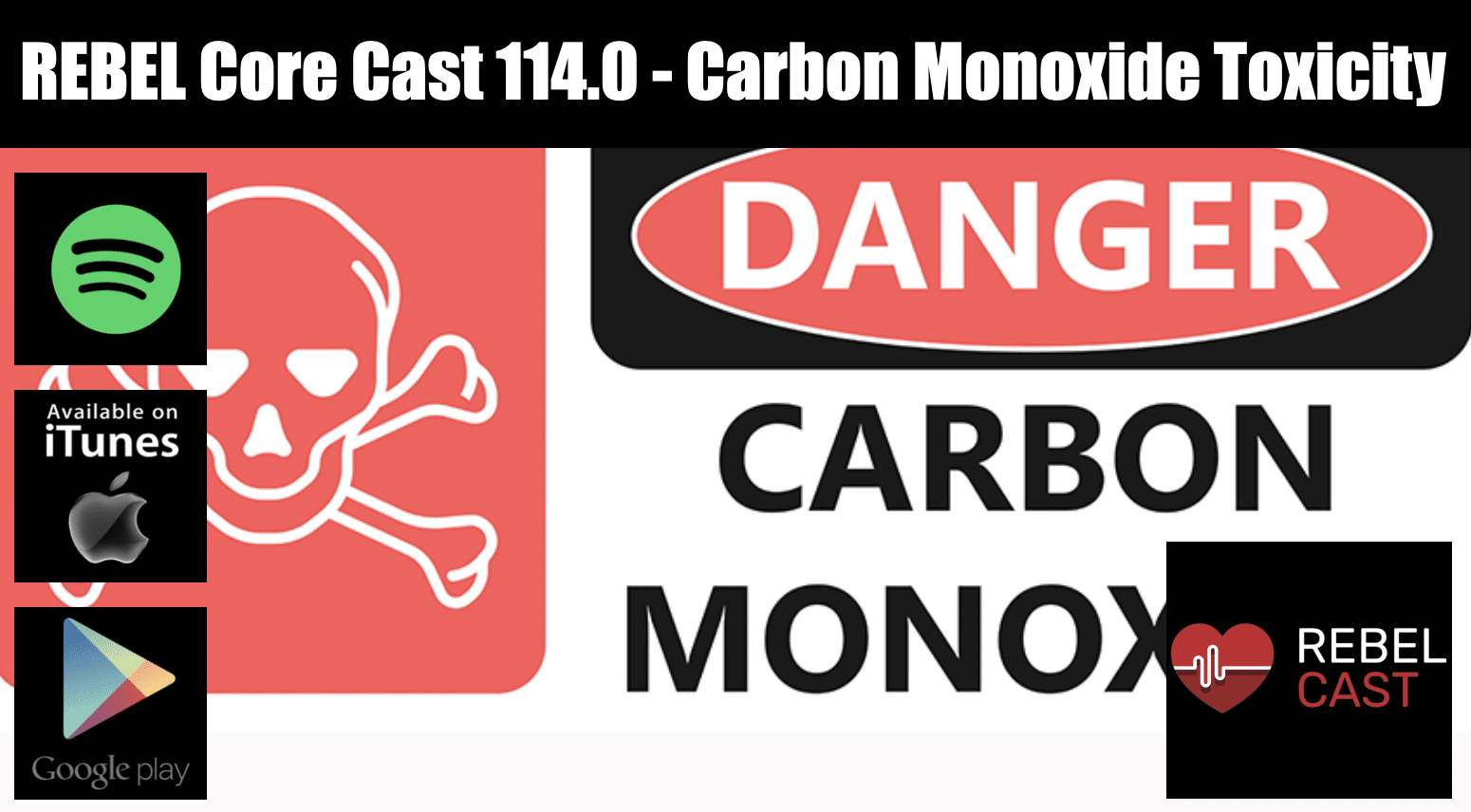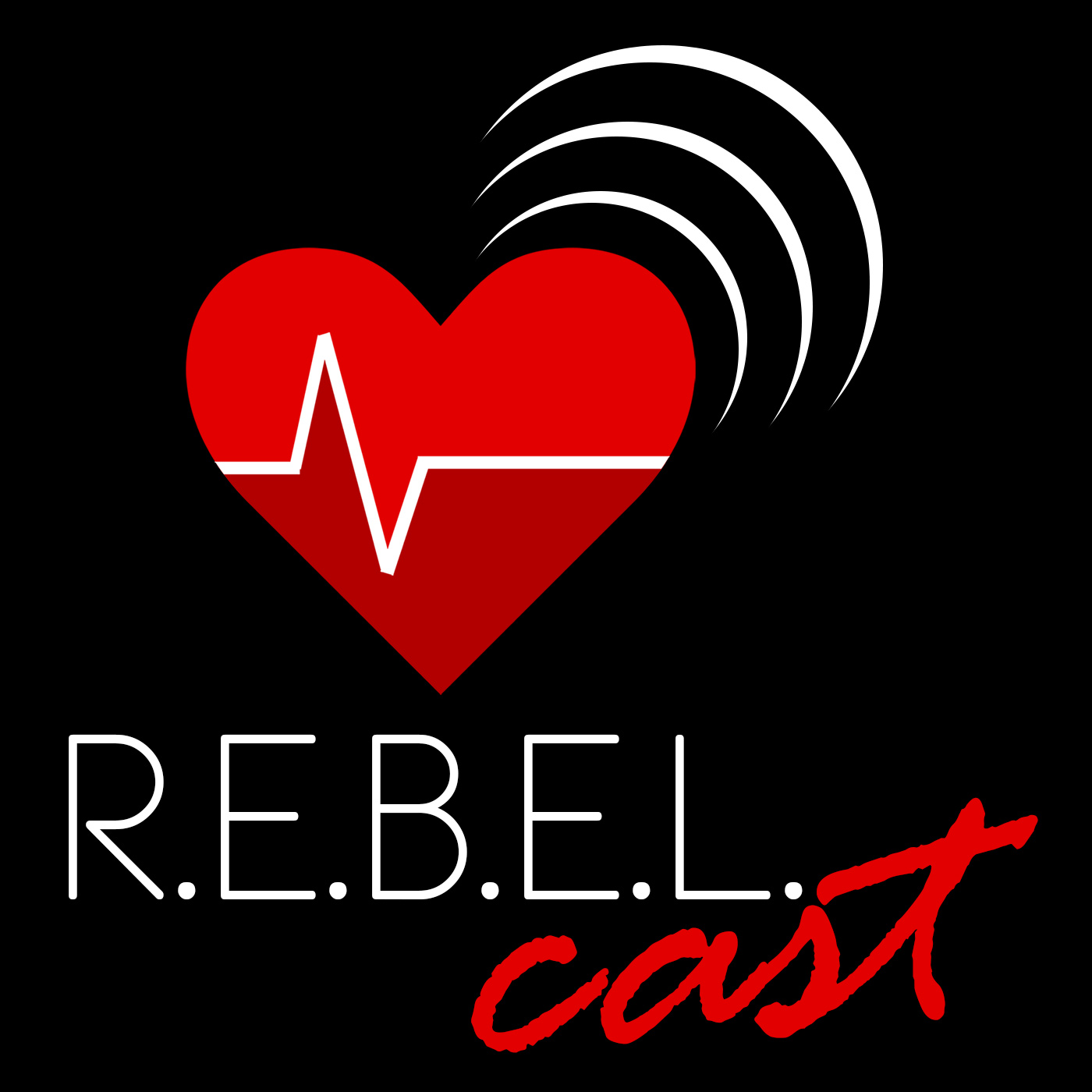
 Take Home Points:
Take Home Points:
- Carbon monoxide is a colorless, odorless, and tasteless gas that results from incomplete combustion of any carbon containing product. Exposure often occur unintentionally from indoor use of gas powered generators, camp stoves, or faulty home heaters.
- The symptoms of mild, acute exposure are non-specific and can be confused with a variety of other disease processes including common viral syndromes.
- Testing is done via co-oximetry which determines the amount of carboxyhemoglobin in the blood. Treatment is guided by supplemental oxygen which decreases the half-life of carboxyhemoglobin.
- Hyperbaric oxygenation should be considered in patients with severe toxicity (syncope, altered mental status, myocardial ischemia, or neurological abnormalities).
REBEL Core Cast 114.0 – Carbon Monoxide Toxicity
Definition and Physiology
- Carbon monoxide is absorbed via inhalation from the incomplete combustion of any carbon containing substance. Most often, exposures often occur unintentionally from indoor use of gas powered generators, camp stoves, or faulty home heaters.
- Toxicity is mediated through multiple mechanisms. Physiologic oxygen carrying capacity is reduced as carbon monoxide binds hemoglobin with a greater affinity than oxygen. Moreover, carbon monoxide shifts the oxygen-hemoglobin dissociation curve to the left which reduces oxygen delivery to tissues. Lastly, carbon monoxide effects cellular oxygen use by impairing oxidative phosphorylation by binding to mitochondrial cytochromes. (Goldbaum 1976)
Clinical Manifestations
- Acute, mild toxicity presents non-specifically. Given that most exposures will occur during the winter months, a common misdiagnosis is influenza or the “common cold.” Symptoms include: headache, dizziness, nausea, vomiting, and generalized weakness.
- More severe toxicity will present with syncope, altered mental status, neurologic disturbance (ie. ataxia), myocardial ischemia, or cardiac arrest.
- Carbon monoxide poisoning may lead to delayed neurologic sequalae – a constellation of dementia, psychosis, parkinsonism, amnestic syndromes, among other neurologic impairments.
Management
- Carbon monoxide testing is performed via co-oximetry which determines the amount of carboxyhemoglobin present.

- The mainstay of treatment is supplemental oxygenation. The half-life of carboxyhemoglobin drops from 5 hours on room air to 1 hour when breathing 100% oxygen at normal atmospheric pressure (via non-rebreather).
- Hyperbaric treatment should be considered for severe toxicity. (Goldfrank’s Toxicology 2019)
- Carboxyhemoglobin levels > 25% or >15% in pregnant patients are indications for hyperbarics, independent of signs/symptoms
- There is evidence that hyperbaric oxygenation reduces the risk of cognitive sequelae after acute carbon monoxide poisoning. (Weaver 2002)
- As always, call your local toxicologist or regional poison control center to help determine the need for hyperbaric therapy.
Take Home Points:
- Carbon monoxide is a colorless, odorless, and tasteless gas that results from incomplete combustion of any carbon containing product. Exposure often occur unintentionally from indoor use of gas powered generators, camp stoves, or faulty home heaters.
- The symptoms of mild, acute exposure are non-specific and can be confused with a variety of other disease processes including common viral syndromes.
- Testing is done via co-oximetry which determines the amount of carboxyhemoglobin in the blood. Treatment is guided by supplemental oxygen which decreases the half-life of carboxyhemoglobin.
- Hyperbaric oxygenation should be considered in patients with severe toxicity (syncope, altered mental status, myocardial ischemia, or neurological abnormalities).
References
- Goldbaum LR, Orellano T, Dergal E. Mechanism of the toxic action of carbon monoxide. Ann Clin Lab Sci. 1976 Jul-Aug;6(4):372-6. PMID: 962299.
- Tomaszewski C. Chapter 122. Carbon Monoxide. In: Nelson LS, Howland MA, Lewin NA, Smith SW, Goldfrank LR, Hoffman RS, , Flomenbaum NE. eds. Goldfrank’s Toxicologic Emergencies, 11e New York, NY: McGraw-Hill; 2019. Accessed November 6, 2023.
- Weaver LK, Hopkins RO, Chan KJ, Churchill S, Elliott CG, Clemmer TP, Orme JF Jr, Thomas FO, Morris AH. Hyperbaric oxygen for acute carbon monoxide poisoning. N Engl J Med. 2002 Oct 3;347(14):1057-67. doi: 10.1056/NEJMoa013121. PMID: 12362006.
Post Created By: Sanjay Mohan MD
Post Peer Reviewed By: Salim Rezaie MD (Twitter @SRRezaie)
The post REBEL Core Cast 114.0 – Carbon Monoxide Toxicity appeared first on REBEL EM - Emergency Medicine Blog.





